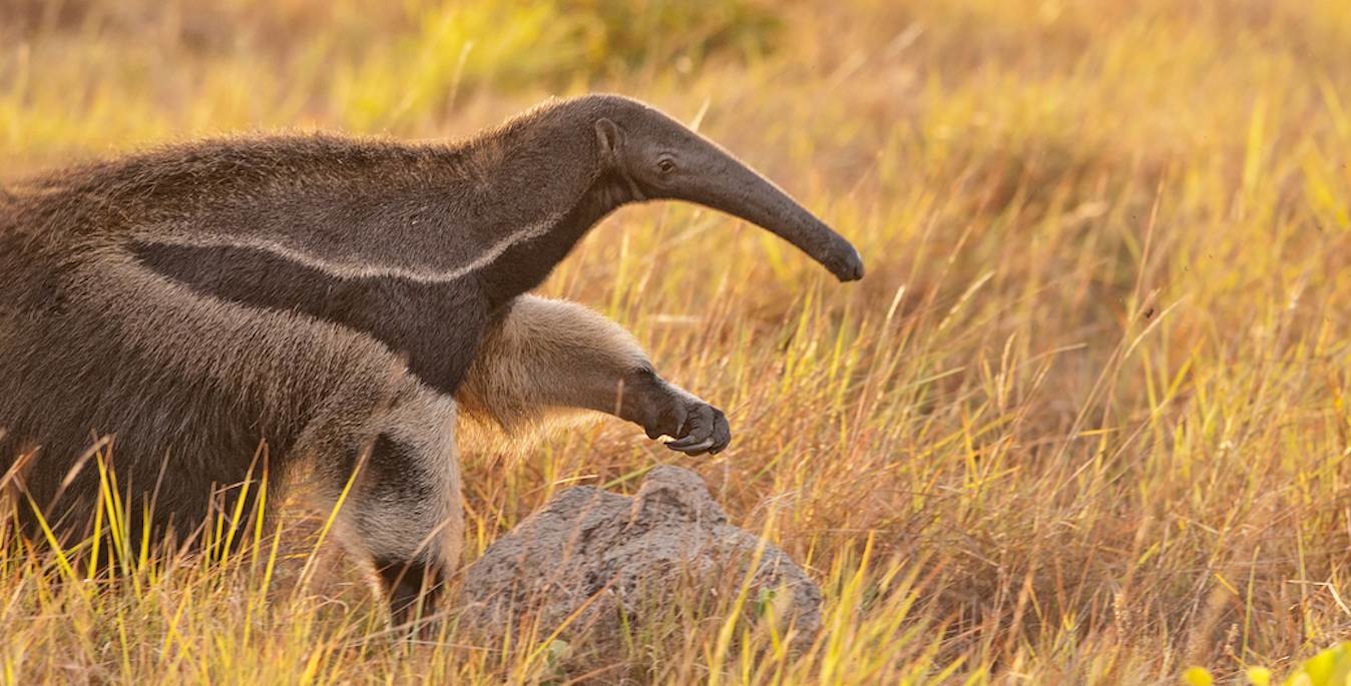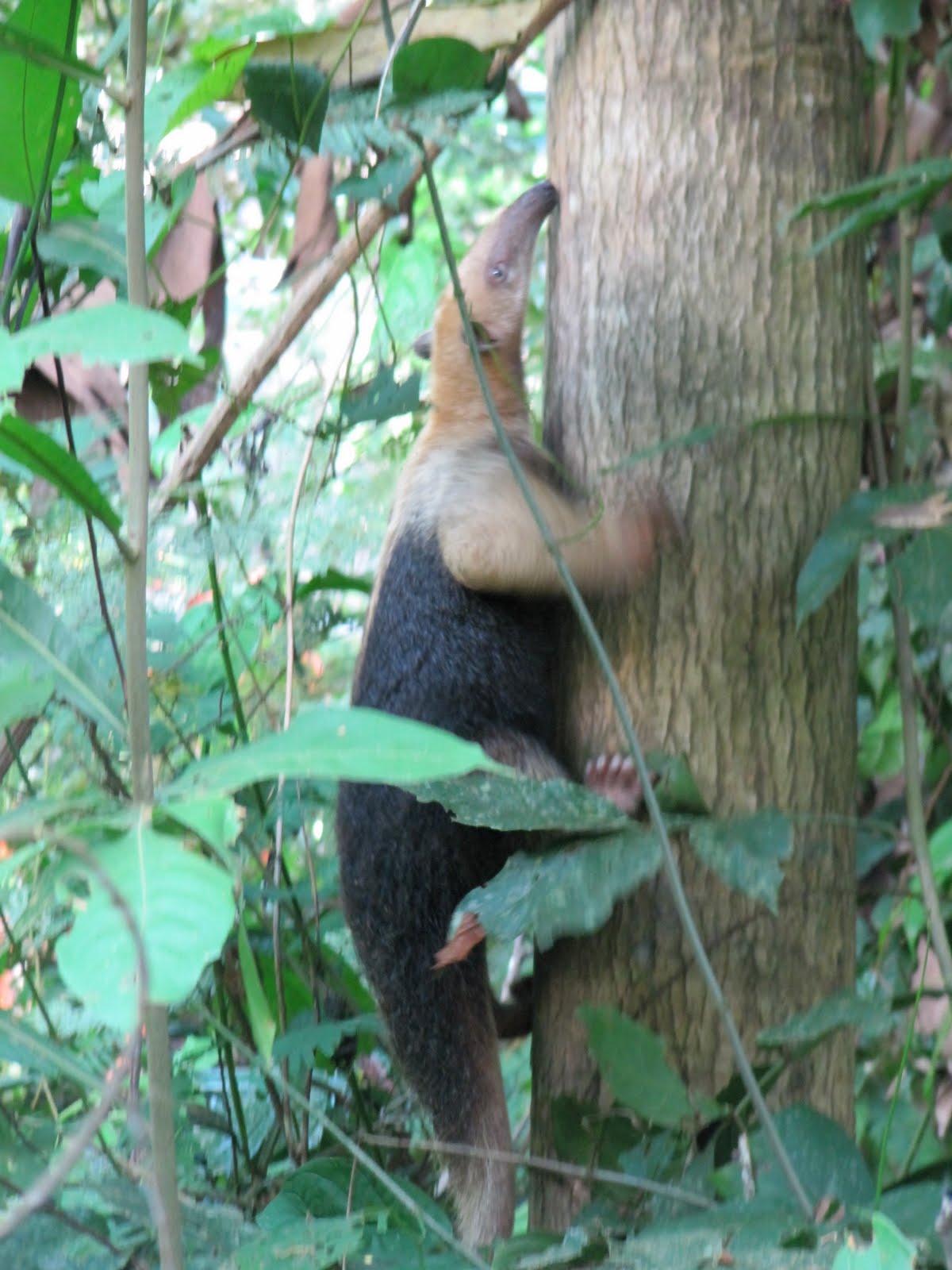General information
- Genus: Myrmecophaga
- Species: Tridactyla
- Also known as: Ant Bear
- Subspecies of Giant Anteater: M. t. tridactyla, M. t. centralis
and M. t. artata - Average length: 1.8 m – 2.2 m (5 – 7 ft.)
- Adult weight: 18 – 52 kg (40 – 115 lb.)
- Diet: Ants and termites
- Natural predators: Jaguar and puma
- Life span in the wild: Unknown
- Litter size: 1 young
- Natural habitat: Varied, including tropical forest, dry forest, swamps and grasslands.
- Geographical range: Honduras and Nicaragua, from Panama and the Guyanas to north-western Argentina and from Ecuador to eastern Brazil
Interesting Giant Anteater facts
- The Giant Anteater can eat up to 30,000 ants, larvae and cocoons per day!
- They are one of the only mammals to have no teeth.
- While foraging ant nests or termite mounds, they stick their tongues out up to 61 cm (2 ft.), flick it 150 times per minute and can “hoover” a few hundred insects in the approximately 40 seconds they spend at each site. It is coated in a sticky saliva while feeding which makes the insects (and eggs and larvae) stick to it.
- Their sense of smell is said to be 40 times more developed than that of humans though their sight and hearing are poor.
- As soon as they are born, Giant Anteaters climb onto their mother’s back and are carried around for 6 to 9 months.
- They have 5 toes on each foot but the inner 3 on their front feet have very long, sharp claws, so much so that the animal has to walk on its wrists to protect them. Its hind feet have five claws each but are much shorter than the front ones and so the whole sole is used in the back feet.
- When fighting or defending themselves, Giant Ant Eaters stand on their two hind legs, using their tail to balance and their front legs to attack.
- They are “sustainable” foragers – even though they break the ant nests and termite mounds with their claws, they never completely destroy them (which, for example, the Giant Armadillo occasionally does) and move around their territory visiting different feeding sites.
- They are active by day and only become nocturnal in areas human activity is high.
IUCN conservation assessment
- Estimated world population: Unknown (“locally uncommon to rare”)
- Conservation status: Vulnerable
- Population trend: Decreasing
Sources
- Animal Diversity Web, Museum of Zoology – University of Michigan
- Giant Anteater – Smith, P., Mammals of Paraguay
- Queirolo, D., Vieira, E. & Reid, F. 2008. Myrmecophaga tridactyla. In: IUCN 2012. IUCN Red List of Threatened Species. Version 2012.2. Downloaded on 13 May 2013.

Giant Anteater spotted at Inkaterra Hacienda Concepción

Giant Anteater climbing a tree in Tambopata
